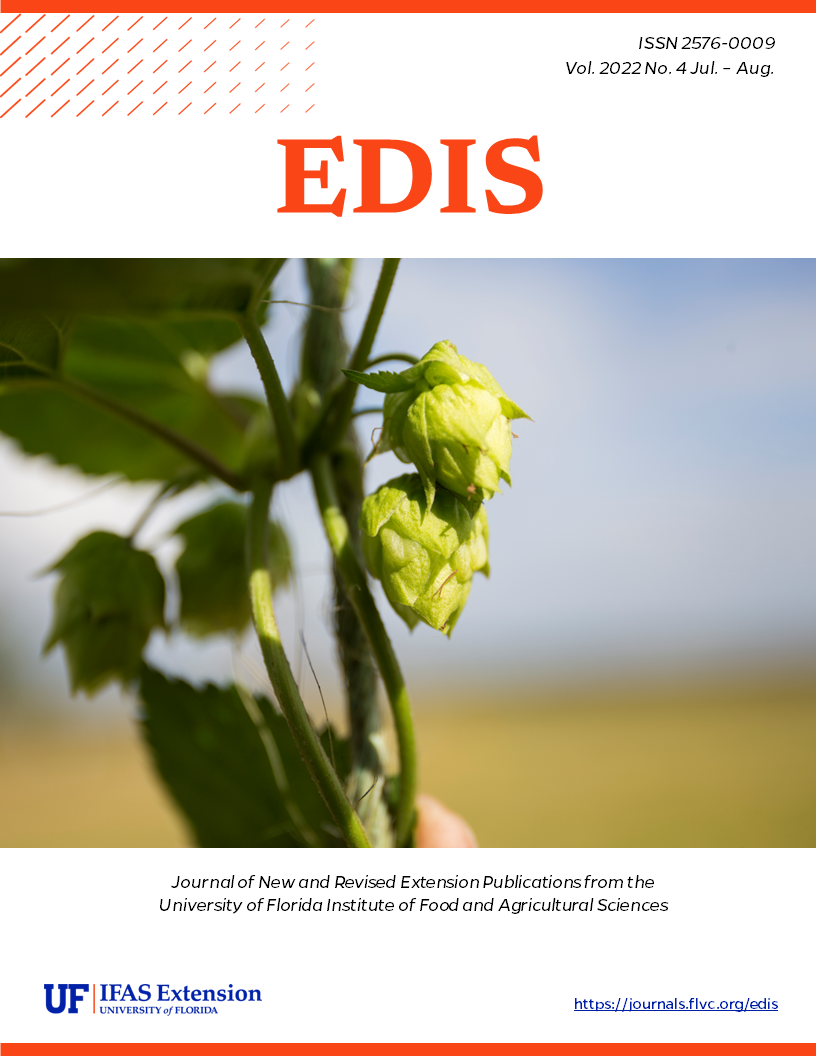Abstract
Este artículo explica cómo determinar el momento óptimo para cosechar el lúpulo. Es parte de una serie que examina los desafíos y las oportunidades de la producción de lúpulo en Florida con base en la investigación del UF/IFAS Gulf Coast Research and Education Center (UF/IFAS GCREC). Escrito por Shinsuke Agehara, Mariel Gallardo, Christopher Del Castillo, Weining Wang, y Jack Rechcigl; traducido por Mariel Gallardo; 4 pp.
https://edis.ifas.ufl.edu/hs1440
References
Agehara, S. 2020. “Using Supplemental Lighting to Control Flowering of Hops in Florida.” EDIS 2020 (2). HS1365. https://doi.org/10.32473/edis-hs1365-2020
Agehara, S., M. Gallardo, A. Acosta-Rangel, Z. Deng, J. Rechcigl, T. Luo, and Q. Qiu. 2021. “Crop Management Practices and Labor Inputs for Hop Production in Florida.” EDIS 2021 (2). HS1409. https://doi.org/10.32473/edis-hs1409-2021
Hop Growers of America. 2017. “Varieties Snapshot.” Accessed August 26, 2021. https://www.usahops.org/cabinet/data/USAHops_VarietySnapshot_2017_SinglePage.pdf
Mabie, D. M. 2021. “Assessment of the Effects of Airflow Conditions Related to Hop Drying.” PhD Diss., University of Nebraska–Lincoln.
Nickerson, G. B., and S. T. Likens. 1979. “Hop Storage Index.” J. Am. Soc. Brew. Chem. 37 (4): 184–187. https://doi.org/10.1094/ASBCJ-37-0184

